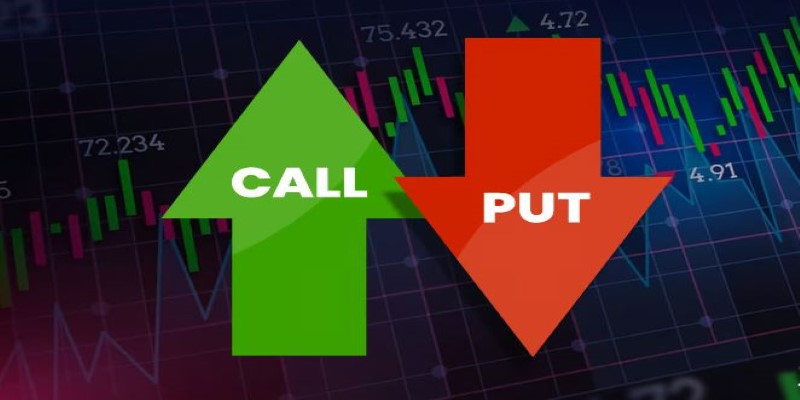Options Trading: Essential Terminology and Strategies Explained
Options trading opens doors to diverse investment opportunities, offering flexibility beyond traditional stock ownership. Understanding key terms is vital for navigating this complex market effectively. Options derive their value from underlying assets like stocks, bonds, or commodities, presenting two main types: calls and puts.
Calls grant the right to buy, while puts grant the right to sell, each offering unique benefits and risks. Delving into the intricacies of strike prices, expiration dates, premiums, and in-the-money/at-the-money/out-of-the-money scenarios empowers investors to make informed decisions. Let's explore these vital options trading terms to unlock the potential of this dynamic financial arena.
What Are Options?
Options are contracts where investors can purchase or sell an asset at a set price within a particular period. Unlike stocks, where ownership is outright, options provide the buyer with the right, but not the obligation, to execute the transaction. This flexibility allows investors to manage risk more effectively by hedging against adverse price movements or speculating on future market trends.
How They Work

Trading options means using contracts tied to assets like stocks, bonds, commodities, or derivatives to leverage financial opportunities. These contracts allow investors to profit from price movements in the underlying asset without owning it outright. Two primary types of options exist:
Calls: A call option lets you buy an asset at a set price before a certain date, but you're not required to do so. The call option gains more worth when the asset price exceeds the strike price. This happens because the holder can purchase the asset at a lower price (called the strike price) and then sell it at the higher market price, making a profit.
Puts: On the flip side, a put option gives the holder the choice to sell the underlying asset at the strike price before the expiration date, but it's not mandatory. Put options become more valuable when the asset's market price falls below the strike price. In this scenario, the option holder can sell the asset at the higher strike price instead of the lower market price, thereby mitigating potential losses.
Short-Term Options vs. Long-Term Options
Short-term and long-term options refer to the option contract's expiration time frame. Understanding the differences between these two options is crucial for investors looking to tailor their strategies to their specific goals and risk tolerance.
Short-term options typically have expiration dates within a relatively short period, usually from a few days to several months. These options are often favored by traders seeking to capitalize on short-term price movements or events in the market. Short-term options tend to be more volatile and may require active monitoring due to their shorter time frames.
In contrast, long-term options have expiration dates that extend further into the future, typically spanning several months to years. These options offer investors the opportunity to take a more strategic approach, allowing them to potentially benefit from gradual price movements or fundamental changes in the underlying asset over an extended period. Long-term options may require less active management than their short-term counterparts but still entail risks associated with market fluctuations and the passage of time.
Ultimately, the choice between short-term and long-term options depends on various factors, including investment objectives, risk tolerance, and market outlook. Investors should carefully consider these factors and conduct thorough research before engaging in options trading to align their strategies with their individual preferences and financial goals.
How to Trade Options
Trading options involves participating in the financial markets by buying and selling option contracts. Before diving into options trading, it's crucial to understand some key concepts that form the foundation of this type of investment.
Strike Price
The strike price is the price at which the option holder can buy or sell the underlying asset when they decide to use the option. For call options, the strike price is the amount the holder can purchase the asset. In contrast, put options are the amount at which the holder can sell the asset. The strike price is set at the inception of the option contract and remains constant throughout its duration.
Expiration Date

The expiration date marks the point at which the option contract must either be exercised or left to expire. Once the expiration date passes, the option loses its value, and the contract is no longer valid. When trading options, it's crucial to monitor expiration dates to prevent missing out on opportunities or encountering undesirable outcomes.
Premium
The premium is the price paid to purchase an option contract. It represents the total cost of buying the option and is determined by various factors, including the underlying asset's price, volatility, time until expiration, and prevailing market conditions.
The premium consists of two components: intrinsic value and time value. Intrinsic value is the difference between the option's strike price and the current market price of the underlying asset (if applicable). Time value reflects the likelihood that the option will become profitable before expiration and compensates the seller for the risk of holding the option.
In-the-money, At-the-money, Out-of-the-money
These terms explain how an option's strike price relates to the underlying asset's current price.
- An option is considered "in the money" when it holds intrinsic value, indicating that the present market price of the underlying asset is advantageous for exercising the option. Call options happen when the market price is higher than the strike price, while put options happen when the market price is lower than the strike price.
- An option is at-the-money if the strike price is equal to the current market price of the underlying asset. At-the-money options are considered neutral in terms of intrinsic value.
- If an option is out-of-the-money, it means it doesn't have any inherent value. This shows that the current price of the asset it's based on isn't high enough to make the option worthwhile. Call options happen when the market price is lower than the strike price; put options happen when the market price is higher than the strike price.
Conclusion
Options trading offers flexibility and potential profit opportunities, but it's crucial to understand the terminology involved. You can confidently navigate the options market by grasping key concepts like calls, puts, strike prices, and expiration dates. Start small, practice, and gradually expand your knowledge to become a proficient options trader.












